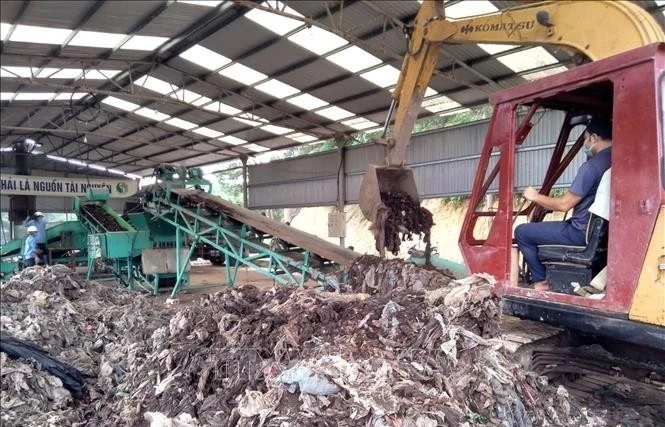Huge storm hits US West Coast, two dead
 A resident cleans his property as workers use a backhoe to clear a pile of rocks and mud after debris flows smashed into houses as a powerful storm that has been lashing northern California moves southward in Camarillo Springs neighbourhood of Camarilla, California. (David McNew/Getty Images/AFP) |
LOS ANGELES: The US West Coast's most ferocious storm in years triggered rockslides, power outages and hurricane force winds on Friday (Dec 12) in southern California, a day after claiming two lives in the Northwest.
At least 450,000 customers have been hit by power outages since the storm hit on Wednesday in northern California, Washington state and Oregon, according to the PG & E utility, although by Friday morning, power had been restored to most homes.
The storm swept south into usually sunny southern California overnight, bringing commuter chaos with five times as many accidents on Los Angeles freeways, as motorists not used to rain struggled to control their cars.
In Ventura County, northwest of Los Angeles, a rockslide engulfed several homes in Camarillo Springs, where over 100 homes were forcibly evacuated in the early hours as the storm arrived. Two people had to be rescued from a swollen river just north of downtown LA, emergency officials said.
Further inland in the mountains, up to 15 centimetres of snow was forecast, bringing chaos but also relief to local ski areas that have suffered from lack of precipitation in a historic three-year drought.
The storm was felt as far north as Canada, where it knocked out power to 70,000 homes and businesses on the Pacific coast after dumping nearly five inches of rain on the region. News reports said a homeless man and a young boy were killed by falling trees in the state of Oregon on Thursday.
Severe flooding, mudslides and high winds - some gusting up to 225 kilometres per hour - wreaked havoc as the unusually powerful storm buffeted Los Angeles and San Diego even further south.
ROCKSLIDES AFTER WILDFIRES
Among southern California's hardest hit areas were foothills stripped of vegetation after being scorched by wildfires over the past few years, and which now are particularly prone to mudslides.
"Flash flooding and debris flows will be a particular threat in and below the recently burned areas," the National Weather Service said in a bulletin. The NWS predicted heavy rainfall throughout the day in southern California, with "hourly rainfall rates between one-half and one-and-one-half inches."
The inclement weather sweeping into the region was being carried on a current with the unlikely name "Pineapple Express" - an intense stream of moisture stretching from Hawaii to the US West Coast.
Hundreds of flights were cancelled on Thursday at San Francisco International Airport, but Los Angeles International Airport on Friday reported no increase in major delays.
The American Red Cross, working with local officials, opened emergency shelters across the region, providing warm meals and lodging to those who lost power in the storm.
US weather experts said the last time the region was hit by such heavy rainfall was in October 2009. Experts said that while rain was welcome to compensate for California's historic drought, it would take a lot more to have a real impact.
"The current storms will not alleviate the drought, unfortunately," Stephanie Pincetl, an environmental studies professor at the University of California Los Angeles (UCLA), told AFP. "We will need several years of unusually high rainfall," she said.
What the stars mean:
★ Poor ★ ★ Promising ★★★ Good ★★★★ Very good ★★★★★ Exceptional
Latest News
More News
- More than $2 billion boost to growth as UK joins CPTPP (December 16, 2024 | 17:25)
- Malaysia launches national AI office for policy, regulation (December 13, 2024 | 10:13)
- ADB approves 500 million USD loan for Philippines’s public financial management reform (December 13, 2024 | 10:00)
- Five tech predictions for 2025 and beyond (December 11, 2024 | 15:52)
- Singapore cracks down on illegal lending operations (November 26, 2024 | 09:25)
- Cambodian King to pay state visit to Vietnam (November 26, 2024 | 09:13)
- Trump claims 'magnificent' victory over Harris (November 06, 2024 | 16:55)
- Trump at 266 electoral votes, Harris at 195: US media (November 06, 2024 | 14:30)
- Trump on verge of victory over Harris (November 06, 2024 | 14:26)
- Tech companies invest in data centres in Thailand (November 04, 2024 | 16:23)



















 Mobile Version
Mobile Version